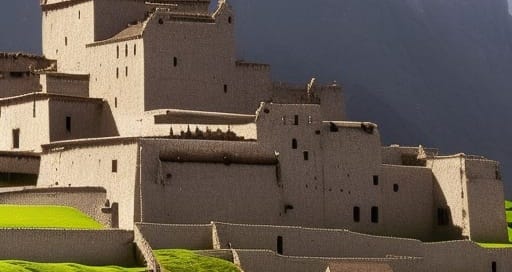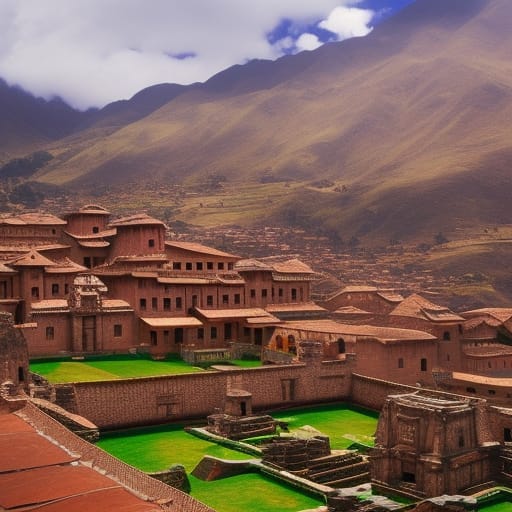The Socialist Phenomenon 2.1
Part 5 - State Socialism, South America: The Inca Empire.
The following is part of a series looking at The Socialist Phenomenon by Igor Shafarevich (1923-2017), first published in 1975 under the title Sotsializm kak iavlenie mirovoi istorii by YMCA Press. My intention is to offer summaries only - I cannot hope to provide robust commentary - Shafarevich provides a masterful historical analysis of socialism in a rare systematic and scientific manner. He was a mathematician of some significance in Russia and applied a similar disciplined and objective approach in his study of socialism. He, like Solzhenitsyn, believed that socialism was ultimately nihilistic and motivated by a death drive that destroys individualism.
For those interested you can find the full English translation here http://robertlstephens.com/essays/shafarevich/001SocialistPhenomenon.html
Last time we were talking about the Socialism of the Philosophers:
State Socialism
In the first part of this series we looked at the development of socialist ideas through what Shafarevich called chiliastic socialism (or a social utopia) over the course of two and a half thousand years. Now we will turn our attention to state socialism, or how these socialist ideas were implemented into particular social structures. Shafarevich laments that this is a difficult task given the scantness of documentation and the difficulty of translating terms from epochs past. Nevertheless he has a good go at it. He starts his exploration of state socialism with the Inca Empire of South America.
The Inca Empire
The Spaniards discovered the Inca Empire in 1531, and described it as well organised and huge (with an estimated population of 12 million). The beauty and organisation was stunning to the Spaniards, with some houses built with large stones so finely fitted together that they seemed to be of one piece. In fact there was a fortress outside of Cuzco (the capital) built of twelve ton stones that was so impressive the Spaniards thought such a thing couldn’t have been built without the help of demons. This is still a theme today with documentaries theorising that aliens must have been the engineers of such projects.
For the Spaniards, one of the puzzling aspects of the Inca society was the fact that they had such amazing infrastructure but such primitive tools. Weapons and farming tools were of wood and stone, iron was unknown, only the llama for meat and wool, transport was on foot (or palanquin if you were fortunate), and no writing system. The compensation for lack of technology was a highly organised society. And so Shafarevich sketches out the structure of the Inca social order into three strata:
The ruling class (Incas) - This is the hereditary aristocracy, the elite, the bureaucracy. From this class the political leaders, officers, administrators, priests and scholars come.
The workers - The bulk of the people who are peasants, herdsmen, artisans, and soldiers.
The state slaves (Yanacuna) - An underling class of a once rebellious tribe who remain slaves to the state.
Land was owned by the ruling class and was lent out to the workers for production sake:
The lands received by the Incas were hereditary, but they were apparently managed by administrators, while the Incas themselves merely made use of the produce. These lands were worked by peasants in a manner described below. Peasants also received land for use from the state. The basic unit was the tupu--a plot large enough to sustain one person. Every Indian received one tupu at marriage, another for each son and half a tupu for each daughter. After the death of a tenant, the land reverted to the state. Land not divided into tupu was treated as belonging to the Sun God and served to support the temples and the priests. The remaining land belonged to the Inca class or directly to the state. All these lands were worked by peasants according to a detailed schedule. Control over all farm work was exercised by clerks. For example, they gave the daily signal for the peasants to begin work by sounding a conch from a specially constructed tower.
Peasants were moved around depending on the needs of the empire and this could be as diverse as military service, building a new temple or palace, or working in a state owned mine. The state would provide materials and tools (food and shelter if working remotely) and everything was under the control of the ruling class.
Inca law dictated 10 periods of life of a peasant man and the various roles he must undertake at various stages of his life. Families were organised into working groups of 10 families, these in turn grouped together to form larger cohorts and even up to groups of ten thousand families. A hierarchy of leadership oversaw such groups with the Incas always at the top of the hierarchy. Live was closely controlled and monitored.
Not only work but the whole life of the citizenry was controlled by officials. Special inspectors continuously traveled about the country observing the inhabitants. To facilitate supervision, peasants, for instance, were obliged to keep their doors open during meals (the law prescribed the time of meals and restricted the menu). Other aspects of life were also strictly regimented. Officials issued every Indian two cloaks from the state stores--one for work and the other for festivals. Within each individual province, the cloaks were indistinguishable in style and color and differed only according to the sex of their bearers. The cloak was to be used until it was worn out. Changes in cut and color were forbidden. There were laws against other extravagances: it was forbidden to have chairs in the house (only benches were allowed), to build houses of a larger size than authorized, etc. Each province had a special obligatory hair style. Such prescriptions extended to other classes, for instance, the quantity and size of gold and silver vessels that an official of lower rank could possess were strictly limited according to his station.
Travel restrictions were in place and peasants could not leave their village without special permission. There was also resettlement programs that were compulsory, dictated by economic factors, and so the peasantry were occasionally moved for health, economic, military or political reasons.
Marriage for the working class was strictly controlled by the state - men were obliged to marry at a certain age and a special official would conduct marriage ceremonies every year for those who had reach the age. For the ruling class, however, there were no such rules and the Inca male, depending on his status, could have a wife and any number of concubines. In fact all unmarried women were at the disposal of the Incas as concubines and servants. One special category of women were the “elect”.
Each year, officials were sent to all sections of the country to select girls eight or nine years old. These were called the "elect." They were brought up in special houses (called "convents" in some Spanish accounts). Every year during a special celebration, those who had reached thirteen years of age were sent to the capital, where the Inca himself divided them into three categories. Some, called Solar Maidens, were returned to the "convent," where they were to engage in activities associated with the worship of the gods of sun, moon and stars. They had to observe chastity, although the Inca could give them to his circle as concubines or take them for himself. Girls from the second group were distributed by the Inca as wives or concubines. A gift of this kind from the Inca was regarded as a high distinction. Finally, a third group was intended for the human sacrifices that took place regularly, but on a particularly large scale at the coronation of a new Inca. The law provided for the punishment of parents who showed their grief when their daughters were chosen for the "elect."
Needless to say there was little of women’s rights in the Inca Empire.
The bureaucracy was a well oiled machine in the Empire, with remarkable administrative achievements and detailed accounting (by way of knotted strings) of everything. Part of this bureaucracy was the monitoring and punishing of the lower classes for transgressions of the law which dictated just about every aspect of life. There were a complexity of capital punishments for all manner of crimes against the state - the most severe involved the execution of all relatives of the accused. Of course the Inca would likely get off with a reprimand whereas the peasant would be executed (in any number of exotic ways) for the same crime. "Some are more equal than others,” was obviously true in the Inca world.
Because of the complete subjugation of life to the law there was extraordinary standardisations of clothing, housing, roads, etc, and any deviation was seen as a threat tho the state and hostile to society.
To what extent is it possible to call the Inca state socialist? Without any doubt, it is much more entitled to this designation than any of the contemporary states that regard themselves as belonging to this category. Socialist principles were clearly expressed in the structure of the Inca state: the almost complete absence of private property, in particular of private land; absence of money and trade; the complete elimination of private initiative from all economic activities; detailed regulation of private life; marriage by official decree; state distribution of wives and concubines. On the other hand, we do not encounter either communal wives or communal upbringing of children. A wife, though given by the state to the peasant, was his alone, and children grew up in the family (if the special class of girls chosen to be "elect" is excluded). Nevertheless, the Inca state seems to have been one of the fullest incarnations of socialist ideals in human history.
The Inca Empire could be construed as a socialist phenomenon, but what Shafarevich points out is the influence of the stories of this civilisation, likely influenced later socialist writers. The stories could have provided numerous details of a Utopian society that inspired authors for the next two centuries (maybe leaving out the sacrifice of young girls and total inequality of women).
Next time we will stay in South America and consider the Jesuit state in Paraguay in the mid sixteenth century.






Thank you for sharing. I had never read about the Incan Impire except they had human sacrifice, which I saw actually as a young girl when it was depicted at a Hemisfair in San Antonio. It was etched into my memory.